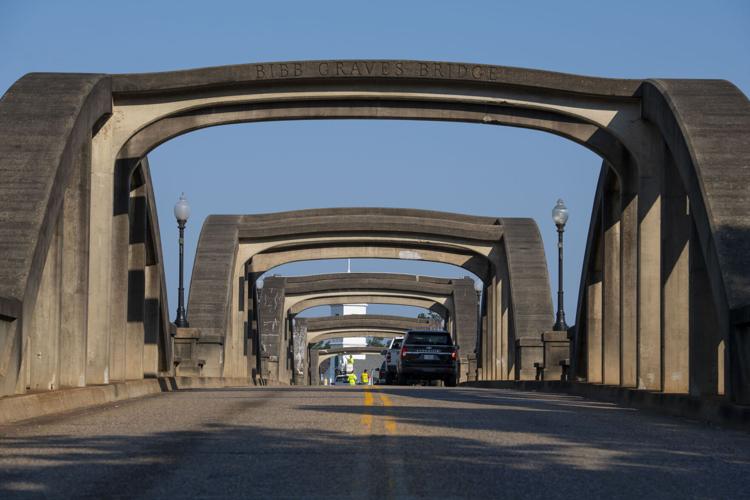At first it looked a lot worse than what was there after a truck struck two of the arches of the Bibb Graves Bridge in downtown Wetumpka.
Posts and messages on social media were immediate, some included photos of broken cement lying on the road bed.
“I got the call as I was waking up,” Wetumpka police chief Ed Reeves said about two hours after the report of a truck colliding with the bridge. “I haven’t had coffee yet.”
Reeves immediately closed the bridge not knowing how significant the damage was or was not.
“I was worried about school traffic,” Reeves said. “We pushed it out everywhere we could. We got the schools to push it out on their messaging system.”
The damage came from a service truck that carries construction dumpsters. Witnesses on the scene said the hoist used to load the truck was up and is what struck the bridge. The truck came to a stop after striking the second arch.
Reeves said the truck was traveling from Millbrook and crossing the bridge from the west side of town.
First responders on the scene including the emergency engineering team from the Alabama Department of Transportation were cleaning up the broken cement and further assessing the damage. Contractors will return later to make further repairs to the bridge.
As of 9 a.m., everyone on the scene was hopeful the bridge will reopen sometime Friday. When the repair work is to be done, the bridge will close to one lane traffic.
Reeves said ALDOT is preparing signage for the bridge repairs and the city will add more signage where needed aiding in any necessary detours.
According to the Alabama Historic Commission, the Bibb Graves Bridge opened to traffic in 1931 through a partnership between the State of Alabama and Elmore County at a cost of $177,440. The design was by Denmark native Edward Houk.
The first bridge across the Coosa River at the site was constructed in 1834 by the Wetumpka Toll Bridge Company. It was destroyed by a flood in 1844.
A second bridge was designed by Horace King and constructed by the toll company in the same year. It was destroyed by a flood in 1886.
A ferry operated at the location until a steel bridge was constructed by the southern Bridge Company of Birmingham. By 1927, deterioration of the steel bridge brought about the partnership to build the current bridge.














